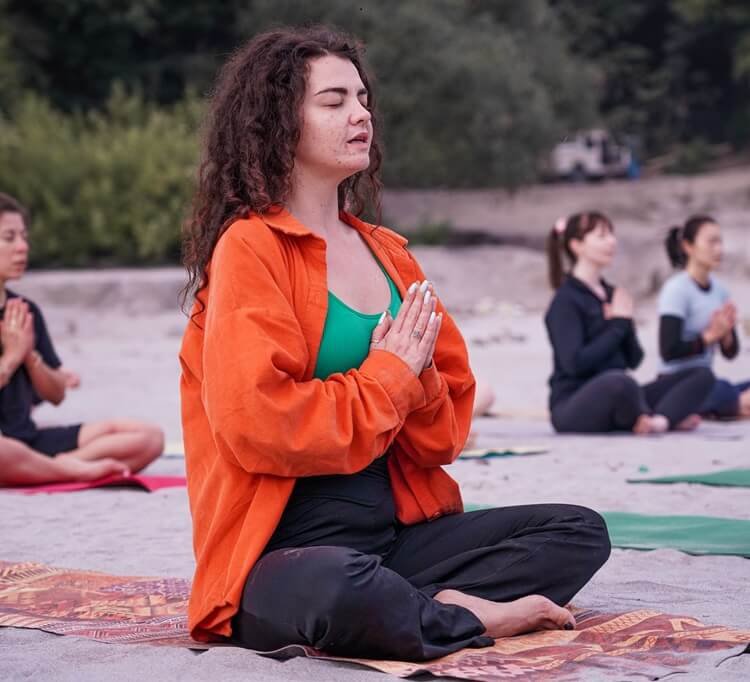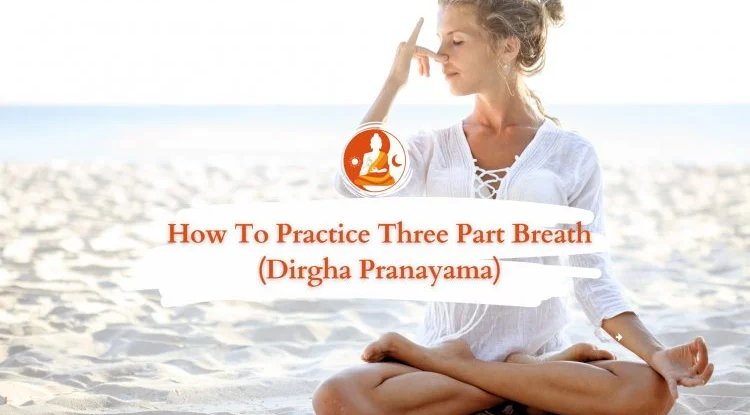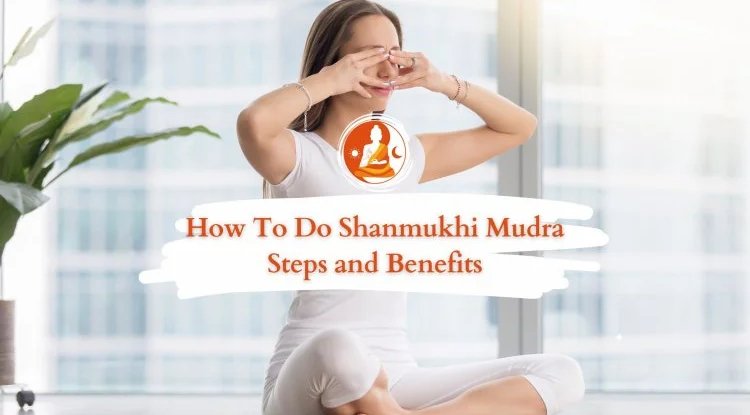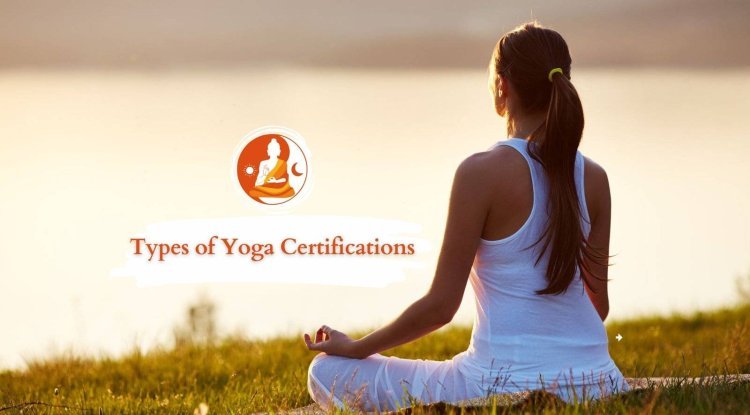What is Rocket Yoga? A Dynamic and Accessible Approach to Ashtanga Practice

Rocket Yoga has been rapidly growing in popularity among yoga practitioners as a more modern and approachable spin on the classic Ashtanga yoga sequence. Examining its background, salient characteristics, and advantages, this essay seeks to shed light on Rocket Yoga. We will teach you the basics of this energizing practice, including the rocket yoga sequence and how it differs from other types of yoga.
No matter your level of yoga experience, this article will provide you with all the information you need to understand Rocket Yoga and determine whether it is the perfect practice for you. We will discuss rocket yoga teacher training programs if you want to take your yoga practice to the next level or teach others this exciting approach. Jump into Rocket Yoga with me as we will show you why it has quickly become a go-to for those who want to take their practice to the next level.
The Birth of Rocket Yoga: A Creative Twist on Tradition
A devoted disciple of Pattabhi Jois, the creator of Ashtanga Yoga, Larry Schultz was the driving force behind the 1980s rocket yoga movement. Schultz, who was jokingly called the Bad Man of Ashtanga, set out to make the classic Ashtanga practice more approachable and entertaining. After years of touring with the Grateful Dead and teaching yoga, he came up with a rocket yoga sequence that could be done by anybody, regardless of their degree of expertise.
Grateful Dead guitarist Bob Weir popularized the term Rocket after joking that it gets you there faster. Because of its lively flow and focus on arm balances and inversions, this vigorous style became very popular very fast, especially in the West. A new take on the age old Ashtanga practice emerged with the creation of Rocket Yoga, which caused a seismic change in the yoga community.
Also Read: Difference Between Ashtanga Vinyasa Yoga and Vinyasa Yoga
Key Features of Rocket Yoga: What Sets It Apart
Among the many yoga options available, Rocket Yoga stands out because to its many distinctive features:
Faster Pace
Rocket Yoga is faster paced than conventional Ashtanga, yet it still maintains the Ujjayi breath. Not only does running at a faster pace provide a better cardiovascular exercise, but it also helps you become hotter faster, which means you can stretch further and more easily. Practitioners are interested and challenged throughout the session due to the rapid pace.
Focus on Inversions and Arm Balances
Earlier and more often in the practice, these difficult positions are introduced. Rocket Yoga helps its practitioners gain confidence, strength, and balance faster than other forms of yoga since it incorporates inversions and arm balances into its sequence. Rocket Yoga is known as an energetic and uplifting practice because of its focus on advanced poses.
Adaptability
Practitioners may adapt positions to their skills, making yoga accessible to anyone. Rocket Yoga is known for its flexibility, enabling students to challenge themselves at their own speed. Instructors typically give variants for each posture so that all students may participate.
Creative Sequencing
Based on Ashtanga, Rocket Yoga offers greater flow diversity and fun. With more rigorous methods, practicing may get boring, but this creative approach keeps it new. Instructors may add additional features and transitions to make each lesson unique.
Use of Music
Upbeat playlists make lessons more lively. The use of music to Rocket Yoga modernizes and makes it more accessible than Ashtanga. The skillfully chosen soundtracks keep practitioners energized and focused throughout difficult periods.
Understanding the Rocket Yoga Sequence
Rocket Yoga has three routines that build on each other. These sequences are the foundation of yoga and give a full body exercise while addressing mental and spiritual concerns.
Rocket I
Rocket I is a sequence of forward folds and hip openers derived from the Ashtanga Primary Series. To get the blood pumping and muscles ready for the next level of yoga, this rocket yoga sequence begins with Sun Salutations A and B done at a little quicker tempo. Incorporating standing postures like triangles and warrior poses helps with stability and strength.
Additionally, the routine include sitting forward bends, which not only promote quiet and reflection but also stretch the lower back and hamstrings. To prepare for more difficult postures, it is important to strengthen the core. Students learn the fundamentals of inversions, including shoulder stands and headstands, with the help of beginner friendly adjustments.
As a great first step into the Rocket Yoga method, Rocket I lays the groundwork for subsequent levels of practice. It acclimates students to the rapid flow and distinctive style of Rocket Yoga while assisting in the development of flexibility, strength, and self awareness.
Rocket II
Rocket II has an emphasis on twists and backbends, drawing inspiration from the Ashtanga Intermediate Series. Among the more complex standing postures taught in this rocket yoga sequence are deeper twists and one legged balance poses. To expand the chest and enhance spinal flexibility, practitioners perform deeper backbends such as Wheel posture and its variants.
A variety of arm balances, including Firefly and Eight Angle Pose, are used to strengthen the upper body. The practice also places a greater emphasis on inversions, particularly handstands and forearm stands.
Rocket II expands upon the principles introduced in Rocket I by pushing students to go deeper into their practice and try out more complex positions. The focus on twists and backbends promotes spine movement, which in turn stimulates the neurological system, resulting in heightened energy and vitality.
Rocket III
This routine provides a thorough full body workout by combining Rocket I and Rocket II. To keep the spine healthy and flexible, the Rocket III rocket yoga practice usually include a combination of forward folds and backbends. Incorporating intricate twists enhances spinal mobility and detoxifies the body.
This set of moves may lead to more complex arm balances and inversions, such as the Scorpion or the One Handed Handstand. Longer holding periods in difficult postures are a common component of Rocket III, which aims to develop stamina and concentration.
If you are an experienced Rocket Yoga practitioner looking to challenge yourself and advance in your practice, this is the sequence for you. Nevertheless, in keeping with the Rocket Yoga principle, adjustments may be made at any time to ensure that practitioners of various abilities can participate.
You may get a full body workout in as little as 60 to 90 minutes with each Rocket Yoga session. A well rounded exercise that targets flexibility, strength, and awareness is the result of the sequences' careful planning.
Though these sequences serve as a basis for Rocket Yoga teachers often change and adjust them to meet the requirements of their students and to keep the practice interesting and dynamic. Rocket Yoga stands out from other, more rigid yoga systems due in large part to its emphasis on flexibility.
Read Also: Yin Yang Yoga Academy Teachers
Benefits of Practicing Rocket Yoga
There are several ways in which Rocket Yoga may improve one health and development, both mentally and physically. Numerous areas of physical and mental well being may benefit greatly by frequent rocket yoga sequence practice:
Physical Benefits
Strength training, flexibility exercises, and cardiovascular health are all improved with Rocket Yoga all encompassing physical workout. Because it is a dynamic activity, it increases muscular mass and flexibility all across the body. Increasing heart rate at a quicker speed is a great way to get a cardiovascular exercise, which in turn may improve circulation, reduce blood pressure, and strengthen the heart.
Rocket Yoga is great for building strength in the core and upper body because of its focus on inversions and arm balances. better physical performance in everyday tasks and other types of exercise may be a result of the better balance, coordination, and proprioception brought about by these difficult positions.
Flexibility, especially around the hips, shoulders, and spine, may be enhanced with consistent practice of the rocket yoga sequence. Many people find relief from back discomfort and the mix of twists, backbends, and forward folds helps to keep the spine flexible and healthy.
Mental and Emotional Benefits
Rocket Yoga, like any kind of yoga, has the potential to alleviate tension and encourage calmness. Engaging in physical activity while maintaining a focused breathing pattern may help alleviate mental and physical stress. A better night sleep, less worry, and an enhanced feeling of well being are all possible outcomes.
Improve your attention and mental clarity with Rocket Yoga tough routines. Beyond the yoga mat, this sharpened mind may help in other parts of life as well, including making better decisions and working more efficiently.
Confidence gets a major boost when you master Rocket Yoga challenging positions, which may raise your self esteem and make you more conscious of your body. Practitioners may feel encouraged to take on further challenges in other parts of their life as a result of the empowered feeling that comes from making progress in the practice.
Holistic Wellness
Because of its integrative nature, Rocket Yoga has the potential to improve your health in every area of your life. This routine may help you feel more energised and focused all day long, which is great for fighting off exhaustion and sluggishness. After doing Rocket Yoga, many students report feeling revitalized and able to concentrate better.
Improve your posture on and off of the mat with Rocket Yoga focus on strengthening your core and stretching your spine. Chronic pain and everyday injuries may both be lessened with this better posture.
You may increase your lung capacity and develop more effective breathing patterns by focusing on breath practice in Rocket Yoga. In addition to improving general health, this improved respiratory function may be especially beneficial for those who suffer from respiratory illnesses.
The intense physical demands of Rocket Yoga, when paired with a nutritious eating plan, may aid in the control of excess weight. As a part of a weight reduction or maintenance program, the technique is successful since it burns calories, increases lean muscle mass, and may enhance metabolism.
Getting Started with Rocket Yoga
Here are a few pointers to get you started on your Rocket Yoga adventure if you are interested:
Find a Qualified Instructor
Select a yoga instructor who has completed Rocket Yoga training and has relevant experience. You may practice yoga safely with the guidance of an experienced teacher who can show you how to adjust the positions as you go. The principles and subtleties of the practice may also be better understood with their help.
Ask a good Rocket Yoga instructors about their education and experience in the field. You may get individualized instruction from several certified teachers who have gone through the rocket yoga teacher training program.
Start with the Basics
To get a feel for the program, start with Rocket I lessons and work your way up to more complex sequences. In order to tackle the more difficult parts of the practice, you need to build up your flexibility, strength, and awareness of your body. Do not be shy about asking questions when unsure of how to align or perform a certain move.
Remember that Rocket Yoga is designed to be adaptable, so even in a Rocket I class, you will have opportunities to challenge yourself with more advanced variations if you feel ready. On the other side, if you are just starting out, it is perfectly OK to practice simple adjustments and fundamental positions.
Listen to Your Body
Although Rocket Yoga promotes challenging oneself, it is crucial to be mindful of one limitations in order to prevent harm. Listen to your body and adjust your positions or take breaks as necessary. Keep in mind that yoga is an individual practice; your results may vary from those of other people.
it is vital to differentiate between the pain of a difficult position and the agony of an injury. Stop doing the position and talk to your teacher if you feel any kind of severe discomfort.
Practice Regularly
Building strength and flexibility for the more difficult parts of the exercise requires consistency. If you want to become better, you need to practice at least twice or thrice a week. You may wish to go to your sessions more often as you become used to them and feel better about the practice.
By consistently practicing Rocket Yoga, you will enhance your knowledge of the physical asanas as well as the philosophical and mental parts of the practice. The advantages of yoga may, with time, become apparent in areas outside of the yoga mat as well.
Invest in Proper Equipment
You will not need much for Rocket Yoga, but a high-quality yoga mat is a must. Since you will be moving swiftly through postures, you can expect to perspire more than with other types of yoga, so choose a mat with adequate grip. Additionally, some people think that blankets, blocks, and straps are useful supports for yoga, particularly for beginners.
Embrace the Community
A feeling of belonging among Rocket Yoga students is encouraged at many of the facilities. Do not be afraid to interact with other students before and after class. Improving your learning and enjoyment of the practice may be achieved via sharing experiences and advice with other practitioners.
Be Patient with Yourself
Like any physical practice, Rocket Yoga progress is not always straight forward. On certain days, you could feel supple and powerful, while on other days, even the most fundamental yoga positions can be difficult. This is a natural and expected aspect of growing as a student. Take your time and reward yourself for the little things you do.
Conclusion: Is Rocket Yoga Right for You?
Rocket Yoga is an innovative take on the classic Ashtanga method that is both contemporary and approachable. For those looking for a demanding but versatile practice, its focus on strength, flexibility, and fun is a big draw. If you want to be in shape, sharpen your mind, and feel better all over, try the rocket yoga routine.
Rocket Yoga offers a refreshing alternative that anybody seeking to enhance their yoga practice or try something new would benefit from. Because of its versatility, it can be practiced by yogis of all skill levels. Those who want to strengthen their upper bodies and master difficult postures may find this practice especially intriguing because of its emphasis on arm balances and inversions.
Keep in mind that Rocket Yoga requires a lot of physical strength. The quick speed and hard postures may not be ideal for everyone, especially those with specific health concerns or injuries. However, adjustments are always available if needed. You must be patient and aware of your physical limitations when you begin Rocket Yoga, just as you would with any new physical activity.
If you are interested in Rocket Yoga but have never done a class or workshop before, you may want to give it a go. The ever changing format of Rocket Yoga is what keeps many students interested and committed to their yoga practice. For those who develop a strong affinity for rocket yoga, enrolling in a teacher training program may be a fantastic opportunity to further their knowledge and maybe even spread this invigorating approach to others.
Trying Rocket Yoga out for yourself is the surest way to find out whether it is the perfect fit. Rocket Yoga has been a source of inspiration and challenge for practitioners all over the globe because to its distinctive combination of tradition and innovation. There is a new yoga route available at Rocket Yoga that you should explore whether your goal is physical fitness, mental clarity, or something else entirely.
FAQs Section
Rocket Yoga is most effective when practiced three to four times weekly. The key is to tune in to your body and make adjustments to the frequency depending on your schedule and current fitness level. If you are consistent, even two sessions a week can help you become better.
It is useful, but not required, to have previous Ashtanga experience. Anyone can practice Rocket Yoga since it is meant to be easy for everyone. Feel free to start even if you are new to yoga; the rocket yoga sequence may be tweaked to suit novices.
Yes, Rocket Yoga is accessible to beginners with the right guidance and adjustments. Get in touch with your teacher and let them know your current skill level before beginning Rocket I sessions. With their help, you may make the necessary adjustments and follow their instructions to have a fun and safe practice. Keep in mind that Rocket Yoga is all about personal progress and adaptability, and that everyone begins somewhere.
Depending on the location and teacher, a Rocket Yoga session might last anywhere from sixty to ninety minutes. A more thorough practice is possible with lengthier lessons since the total rocket yoga sequence may be rather extensive. Still, for those who are short on time, there are studios that provide shorter but more rigorous lessons.
Rocket Yoga cannot be done without a yoga mat. It is not always required to use props such as blocks, belts, and blankets for alterations, although they may be beneficial. Because yoga is a heat building exercise, some people find it helpful to wear a yoga towel. Studio policies might vary greatly; some may provide props, while others will ask that you bring your own.
What's Your Reaction?
























